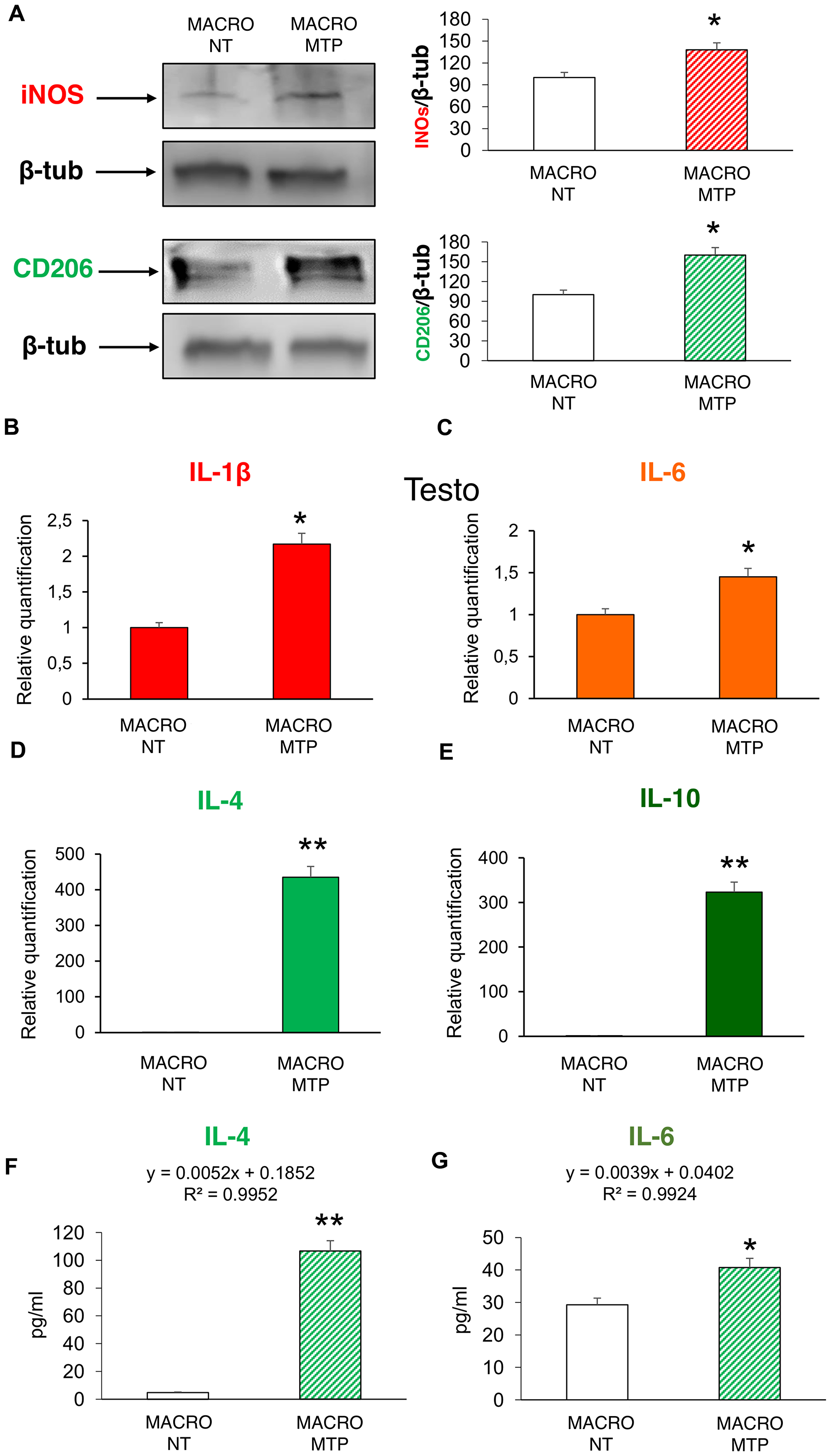Oncotarget Volume 11, Issue 7 | The research team analyzed the effects of Mifamurtide on macrophage polarization and on MG63 proliferation, migration, and differentiation, evaluating the expression of M1/M2 and osteoblast markers and molecules involved in metastasis and proliferation pathways.
Their data suggest that Mifamurtide, switching macrophage polarization towards a TAM-like intermediate M1/M2 phenotype, may modulate the delicate balance between pro-inflammatory and immunomodulatory macrophage functions.
Dr. Francesca Rossi from the Department of Woman, Child and General and Specialist Surgery at the University of Campania "Luigi Vanvitelli" in Napoli Italy said, "Osteosarcoma (OS) is the most common bone tumor of the childhood. Patients who present localized OS have an intermediate prognosis (65% survival rate ADD REF) while patients who present metastasis have a very poor prognosis."
"Osteosarcoma (OS) is the most common bone tumor of the childhood. Patients who present localized OS have an intermediate prognosis (65% survival rate ADD REF) while patients who present metastasis have a very poor prognosis."
- Dr. Francesca Rossi, Department of Woman, Child and General and Specialist Surgery at the University of Campania "Luigi Vanvitelli"
In response to different stimuli, two distinct forms of activated macrophages can be observed: classically activated macrophages and alternatively activated macrophages.
M1 macrophages are activated by Interferon-Gamma or Lipopolysaccharide and exhibit anti-tumor properties through the production of pro-inflammatory cytokines, Interleukin-6 ) and inducible factors against pathogens such as the Tumor Necrosis Factor and the Nitric Oxide Synthase.
M2 macrophages, instead, are activated by anti-inflammatory cytokines and the phosphatidylinositol-3-kinase serine-threonine-kinase and mammalian target of Rapamycin pathway and exert immunosuppressive effects, enhance angiogenesis and tumor progression.

Figure 1: Effects of Mifamurtide (MTP) on macrophage polarization. (A) iNOS and CD206 protein expression levels in macrophages activated or not with MTP [100 μM] determined by Western Blot, starting from 15 μg of total lysates. The most representative images are displayed. The proteins were detected using Image Studio Digits software and the intensity ratios of immunoblots compared to untreated (NT) macrophages, taken as 100 (arbitrary unit), were quantified after normalizing with respective loading controls for the housekeeping protein β-Tubulin. The graphs represent the relative quantification for iNOS and CD206 expression as mean ± SD of three independent experiments. A t-test has been used to evaluate the statistical differences in protein expression levels. *indicates p ≤ 0.05 compared to NT macrophages. (B–E) IL-1β, IL-6, IL-4, IL-10 mRNA expression levels in macrophages activated or not with MTP [100 μM] determined by Q-PCR. Results were normalized for the housekeeping gene β-Actin and showed as mean ± SD of three independent experiments. A t-test has been used to evaluate statistical differences in mRNA expression levels. *indicates p ≤ 0.05 compared to NT macrophages. **indicates p ≤ 0.01 compared to NT macrophages. (F, G) The release of the anti-inflammatory IL-4 and of the pro-inflammatory IL-6 from macrophages activated or not with MTP [100 μM] determined by ELISA assay. The cytokines concentration was determined on a standard concentration curve according to the manufacturer's instructions. The assays were conducted three times. Data are expressed as mean ± SD (pg/ml). A t-test has been used for statistical analysis. *indicates p ≤ 0.05 compared to NT macrophages, **indicates p ≤ 0.01 compared to NT macrophages.
In contrast to many other tumor types, M2 polarized macrophages, reduce metastasis and improve survival in high-grade OS patients.
Mifamurtide or MAPACT is a synthetic analog of a component of bacterial cell walls, which stimulates the immune response activating macrophages and monocytes.
The Rossi Research Team concluded in their Oncotarget Research Paper, "Mifamurtide seems to interfere with the capacity of macrophages to easily switch from the two opposite activation states M1 and M2, ensuring the maintenance of the delicate balance between pro-inflammatory and immunomodulatory functions of macrophages."
Sign up for free Altmetric alerts about this article
Full text - https://doi.org/10.18632/oncotarget.27479
Correspondence to - Francesca Rossi - [email protected]
Keywords - macrophage polarization, tumor micro-environment, osteosarcoma, Mifamurtide, MG63
About Oncotarget
Oncotarget is a biweekly, peer-reviewed, open access biomedical journal covering research on all aspects of oncology.
To learn more about Oncotarget, please visit https://www.oncotarget.com or connect with:
SoundCloud - https://soundcloud.com/oncotarget
Facebook - https://www.facebook.com/Oncotarget/
Twitter - https://twitter.com/oncotarget
LinkedIn - https://www.linkedin.com/company/oncotarget
Pinterest - https://www.pinterest.com/oncotarget/
Reddit - https://www.reddit.com/user/Oncotarget/
Oncotarget is published by Impact Journals, LLC please visit https://www.impactjournals.com/ or connect with @ImpactJrnls
Media Contact
[email protected]
18009220957x105




